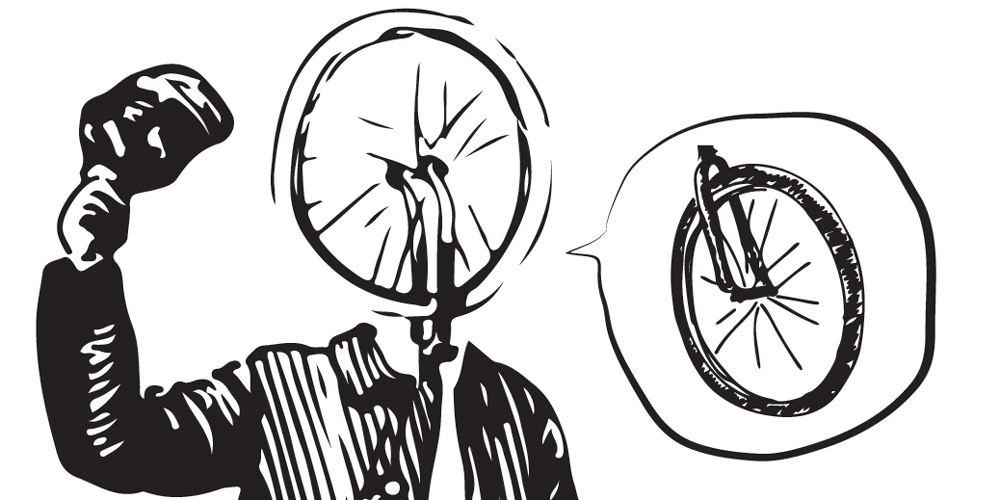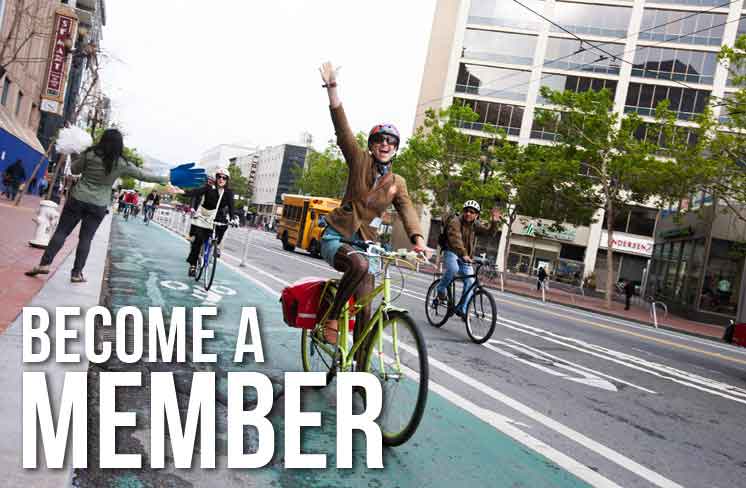Wheel Talk for Wheel People is a monthly advice column written by Christopher White, our adult education program coordinator. Though bikes, biking and getting around SF are our areas of expertise, feel free to ask anything! To submit your questions, please click here.
Wheel Talk, I’m in the market for a new helmet, and I keep seeing helmets touting themselves as having “MIPS” technology. It seems to be some safety feature, but I’m skeptical. What is it, and does it actually increase a helmet’s safety? —Hard-Headed
Dear Hard-Headed: Countless ads asserting a product’s life-changing “revolutionary technology” have built up in most of us a callous of healthy skepticism towards such claims. I shared your doubts about that little MIPS sticker but never bothered to do much research because I didn’t need a new helmet.
However, recent research into bike helmet safety out of Virginia Tech caught my eye. Scientists tested many commercially-available helmets, all of which had met the standards set by the Consumer Product Safety Commission, or CPSC. Their study measured a helmet’s ability to deal with both linear forces (direct impact) and rotational forces (like those that make a ball spin when it hits a surface at an angle). All of the helmets that received Virginia Tech’s top five-star rating used MIPS technology.

Virginia Tech’s Helmet Lab tests collisions at a variety of angles. Courtesy of Virginia Tech
So what the mips is MIPS? It stands for Multi-directional Impact Protection System, and it consists of a thin layer of plastic on the inside of the helmet, next to the head, that’s attached to the outer foam of the helmet with an “elastomeric attachment system.” This extra layer mitigates for rotational forces by creating a slip plane that mimics the layer of fluid between your skull and your brain. That slip plane allows the helmet to move just 5mm or so, absorbing rotational forces that would otherwise make your brain slosh around in very unhealthy ways.
Is it worth it? At this point, MIPS helmets are available from many companies at many prices. The data says they’re safer. So I would say: yes, it’s worth it!
Wheel Talk, is it legal for me to “filter up” at a red light, passing cars that are stopped to get to the front? —Upstream
Dear Upstream: First, let’s talk about why it might be advantageous to “filter up.” The most obvious is that human eyes are in the front of our heads, and those of us on bikes can feel most confident about being seen when we’re in front of those eyes. If we know people driving have seen us, we can feel relatively confident that they’ll refrain from hitting us. Additionally, car exhaust spews from the rear of a vehicle, not from the front; being in front of traffic permits us to breathe cleaner air than if we were at the back. Getting up to the front at a red light has its benefits.
Not all red lights or intersections are created equal, however, so there are a few different situations I should address here. If there’s a bike lane, no problem; pass all the cars you like. In fact, in San Francisco, we’re seeing more and more “bike boxes,” green-painted, bike-only boxes at intersections that specifically invite people on bikes to move in front of vehicular traffic.
Regarding shared streets with no bike lanes, the California Vehicle Code states that people on bikes must ride as close to the right-hand curb as is practicable, except in certain circumstances, such as overtaking other bicycles or vehicles. When there’s no bike lane to remind people in motor vehicles that bikes are present, passing stopped traffic on the left is preferred — after all, people in cars are imperfect in their use of turn indicators, and a person in a car making an unexpected turn just when you’re passing to the right could result in a crash.
We can also consider that, according to the California DMV, the state “does not allow or prohibit” lane-splitting. Taken together, I would say that filtering to the front is permitted insofar as it isn’t illegal. I’ll give the important caveat, however, that you do so at your own risk. Avoid squeezing through tight spaces, and never try to squirm between a Muni bus and a boarding island on Market Street! Also be aware that Muni buses might be releasing passengers, and you should avoid interfering with their safe disembarkation. Even car doors might suddenly fly open to release a passenger at the red light. Better to wait at the back of traffic for a moment then to squeeze through in a way that puts you or other people at risk.


